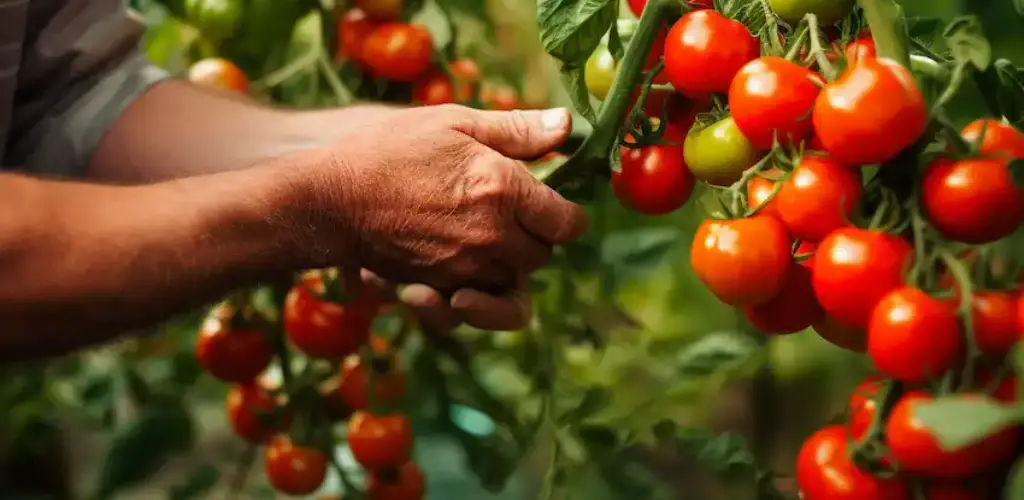
Tomatoes are among the most popular and rewarding plants, but producing a bountiful harvest requires more than just planting and watering. Proper pruning plays a crucial role in the health and productivity of tomato plants. This guide will walk you through the why, when, and how of tomato pruning, providing detailed steps and insightful tips to help you master the art and science of tomato pruning for an impressive harvest.
Understand the importance of pruning tomatoes

Pruning or the targeted removal of plant parts is essential for tomatoes for several reasons:
- Improves air circulation: Pruning opens the structure of the plant and reduces the risk of fungal diseases by allowing air to flow freely through the foliage.
- Improves Sun Exposure: Removing excess leaves ensures that sunlight reaches the fruits and lower parts of the plant, which is essential for healthy growth and ripening.
- Directs energy into fruit production: Removing unnecessary shoots and leaves allows the plant to focus its energy on producing larger, healthier fruits.
Preparation for pruning
Before you start pruning, make sure you have the right tools. A clean, sharp pair of secateurs or scissors is essential. It’s also a good idea to disinfect your tools before and after pruning to prevent the spread of disease.
Step 1: Identify the type of tomato plant
- Determinate Tomatoes: These plants grow to a certain height, produce fruit all at once, and then decay. Pruning is minimal and focuses on removing all shoots below the first flower cluster.
- Indeterminate Tomatoes: These plants continue to grow and produce fruit throughout the season. They require regular pruning to control their size and direct their energy.
Step 2: Pruning Basics
- Remove suckers: Suckers are small shoots that grow in the axils (the angle between the stem and a leaf). For indeterminate varieties, remove shoots below the first cluster of fruit to encourage branch fruiting. Leave some shoots on certain plants to provide shade for the fruit.
- Prune lower leaves: Remove leaves near the ground to prevent soil-borne diseases from reaching the leaves. This is especially important after the plant has fruited.
- Thin leaves: Thin some leaves in the center of the plant to improve air circulation and sunlight penetration.
Step 3: Advanced Cutting Techniques
- Top Up: About a month before the first expected frost, you can “top out” indeterminate plants by cutting off the top growing point. This directs the plant’s energy into ripening existing fruit rather than producing new growth.
- Pruning in Missouri: Instead of removing entire shoots, you can trim just the tips and leave a leaf or two. This method, known as Missouri pruning, allows the plant to retain some of its leaf growth without becoming too bushy.
Step 4: Regular Maintenance
- Monitor your plants: Check your tomato plants regularly and prune them back if necessary. The best time to prune is in the morning when the plant is dry to prevent the spread of disease.
- Support your plants: Support your plants with stakes, cages or trellises, especially as they grow larger and bear fruit.

Step 5: Care after cutting
- Watering: After pruning, make sure your tomatoes get enough water. It is best to water plants at the base to avoid wetting the leaves, which can lead to fungal diseases.
- Fertilization: Feed your plants a balanced fertilizer to support their growth, especially after heavy pruning.
Pruning tomatoes may seem like a complicated task, but with practice it becomes an easy and rewarding part of growing tomatoes. By following these detailed steps and understanding the needs of your tomato plants, you can ensure a healthy, productive garden full of delicious, sun-ripened tomatoes. Have fun gardening!
Inspired by that? Share the article with your friends!
